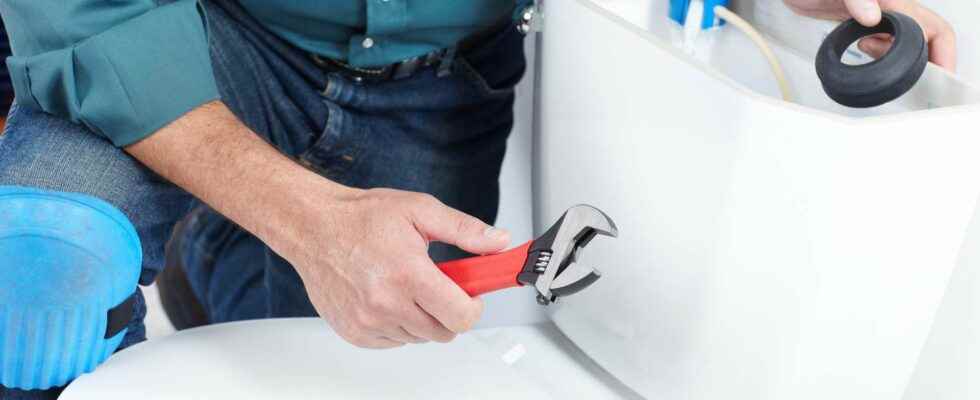A typical toilet flush consumes approximately 9 liters of water. It is therefore regularly 36 liters of water per person per day that are evacuated if a double flow system is not installed. In fact, activating the toilet flush represents almost 20% of drinking water consumption. But when it fails or a leak occurs, what to do?
You will also be interested
[EN VIDÉO] Your toilets are potentially a source of Covid-19 contamination As faecal transmission of SARS-CoV-2 is possible, although in a minority, Chinese scientists have been interested in the water droplets projected by the whirlwind that is unleashed in the toilet bowl when flushing a toilet. water. This study, which may make you smile, was published in Physics of Fluids.
A toilet flush is made up of two independent elements: the water filling mechanism and the flushing mechanism. The first consists of a tap to be operated to cut off the water if necessary and a float which reports the water level.
The second is more complex and includes: the push button (or pull) controlling the flush, an overflow which will prevent water from overflowing, a bell that rises as soon as the flush is activated, the valve and its seal which seal the tank.
Determine the toilet flushing problem
Identifying the flushing problem always precedes troubleshooting. Opening the hood is a first point to achieve in order to visualize the interior of the system and understand why the flush is defective. It will then be possible to view the entire mechanism to determine the failure and facilitate repair. Repair a flush will therefore be carried out according to the weaknesses noted. Three situations are common:
- the tank fills too slowly: this means that the float membrane is equipped with tartar or damaged;
- water is flowing from the overflow: the float no longer plays its role, it is scaled up, incorrectly adjusted or faulty;
- water is leaking from the bottom of the tank: the valve or seal is encrusted with scale or faulty.
How to repair the toilet float membrane?
The first step is to turn off the toilet faucet and then flush the water in the tank to access the mechanism. The valve and the float are screwed together, it is easy to see this by observing the system.
For the second step, it will be necessary to separate the valve from the float using pliers, then to open the float to reach the membrane which is actually a seal. If it is scaled, soak it in a glass of White vinegar will prove effective. However, if this small seal is punctured, it must be replaced. Finally, the flush float system can be reassembled.
How to repair the float of a toilet flush?
You should know that the maximum filling level of the tank toilets must always be under the overflow. An incorrectly adjusted float on a push button flush can be readjusted by tightening the adjustment screw that connects its stem to the faucet. On a pull-down toilet, it is simply a matter of slightly twisting the rod to bring the float lower than the overflow.
A float that no longer works properly must be descaled or changed. In the case of a descaling, it is necessary to close the tap, unscrew the float, then drain the water from the tank. From then on, the float can be removed, opened and soaked in a bath of white vinegar for at least an hour before being reassembled. The operation of completely changing the float is almost identical, except that the old one must be discarded and replaced with a new one.
How to repair the mechanism of a toilet flush?
In the event of a failure of the flushing mechanism which generates a leak from the bottom of the tank, it may be advisable to descale it before considering replacing the entire system.
First, the water in the tank must be emptied, in the same way as before. The mechanism is disassembled by rotating it 1/4 turn. It can be soaked in white vinegar to remove scale, then cleaned more thoroughly to erase all traces. Finally, it will be reinstalled. If the mechanism is really damaged, it will have to be completely changed.
Interested in what you just read?
